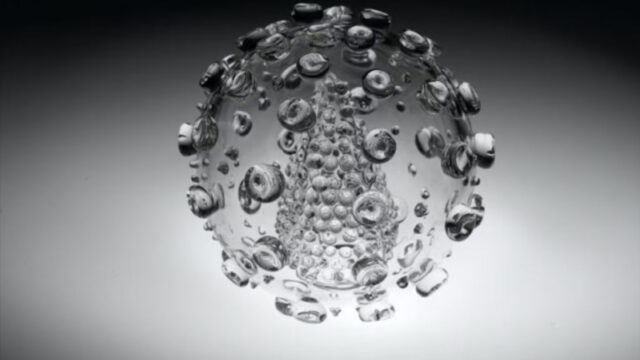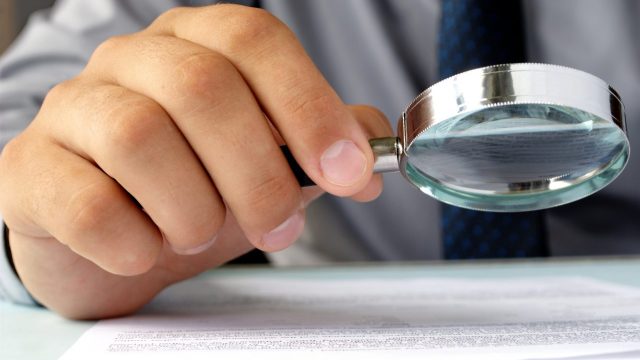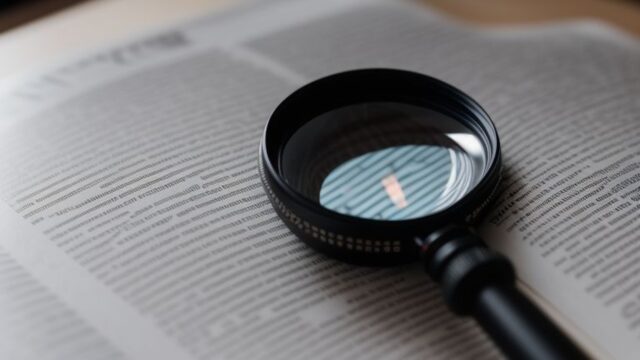
Science says … bad science reporting by Microsoft News should serve as a wake-up call
Adi Gaskell previously reported on research showing that most Americans get their science news from general news outlets rather than specialty sources, even though the general news sources are seen as being much less accurate1. Most people blame the journalists rather than the academics for this, despite research2 and case studies indicating that researchers can spin their findings.
In this article, I’ll use the example of a recent news item from Microsoft News (formerly MSN News) to highlight why directing a sizeable portion of the blame towards journalists is very appropriate. In doing so, I hope that I could make at least some people realise that they should be acting on their doubts about general news outlets, and instead seeking their science news from quality specialty sources such as The Conversation. I also hope that I could make general news outlets like Microsoft News realise that they need to significantly lift their game.
I noticed the particular Microsoft News item on Facebook. It didn’t come from one of the science feeds on Facebook, which as I’ve previously revealed, have been known to circulate questionable information. Rather, it was one of the “Science says…” posts that are endlessly shared by Facebook users.
This particular Microsoft News item also wasn’t one of the the typical “Science says…” misinformation stories that are regularly circulated on social media. These stories report incomplete aspects of scientific studies, or misinterpret the findings and highlight unusual claims. Examples of this include Science says South Dakota is kind of full of psychopaths and Science says drinking wine and beer and eating chocolate could help you live longer.
Rather, the Microsoft News “Science says…” item has absolutely no scientific basis at all. It is titled “Science say [sic] this is the most intelligent star sign” (Figure 1 – click to enlarge). It is shown as being sourced from Cosmopolitan magazine, and a parallel article by the same author and with a similar “…according to science” headline appears in Cosmopolitan magazine.
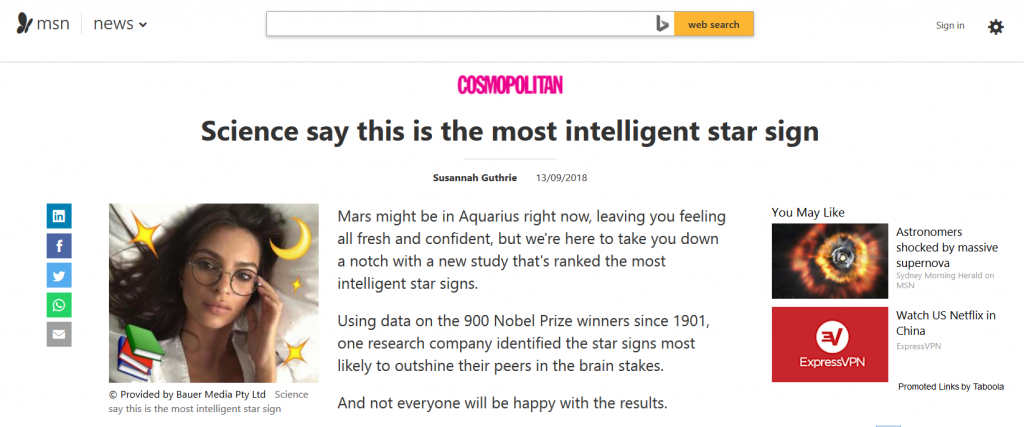
This so-called science news item refers to a “new study” by a research company that used data on the 900 Nobel Prize winners since 1901 to identify “the star signs most likely to outshine their peers in the brain stakes”. Star signs make up the zodiac of western astrology, which has the belief that the position of celestial bodies at the the moment of a person’s birth will influence their future.
However, extensive scientific research has found no evidence for the claims of astrology, for example as reported in papers by Carlson3, Kelly4, and Blackmore & Seebold5.
The claim in the Microsoft News article that associating zodiac signs with the odds of winning the Nobel Prize represents a “new study” is also false. For example, in 2001, Pollex, Hegele, & Ban presented the results of such a study6 in an article in the Canadian Medical Association Journal. But the article is tongue-in-cheek, highlighting the non-science of astrology. Pollex, Hegele, & Ban conclude by stating that:
We do not propose that astrology is equivalent to the retrospective, cross-sectional analyses performed by clinical evaluative scientists. After all, astrology provides an internally consistent explanation for its observations, although typically without statistical justification. In contrast, scientists must accept the less satisfying explanation that foraging through databases using contrived study designs in the absence of biological mechanistic data sometimes yields spurious results.
Playing detective
Seriously concerned that Microsoft News had blatantly reported non-science as science, I set out to try to determine how this has happened. Has the “Science says…” spin come from the journalist who wrote the article, or has it come from information they sourced or that has been provided to them?
There are no links to any source materials in the Microsoft News item, but the parallel Cosmopolitan (“Cosmo”) magazine article has a link to an interactive resource from GoCompare, titled “Bright Sparks”. GoCompare is a British website that provides comparison details for financial products including car insurance, home and pet insurance, and breakdown cover.
The introduction to the Bright Sparks resource states that it is an analysis of 117 years of Nobel Prize winners prepared with the aim of uncovering what makes a Nobel Laureate. But there’s no mention at all of star signs in the Bright Sparks resource, which contains information that is both credible and useful. Indeed, as I went through the resource, the education affiliation tables caught my eye. It’s very interesting to see how the education affiliations for Nobel Prize winners compares with the education affiliations for Unicorn League billion-dollar business startups.
I then wondered if the star signs aspect had been a tongue-in-cheek teaser inclusion in the media releases that I thought GoCompare would very likely have sent around to announce Bright Sparks. There are no recent media releases on the GoCompare website, so I sent two Tweets to GoCompare asking them about the “Science says…” spin in the Microsoft News item. A short time later, I received an email from Lynsey Greenwood, Account Manager with creative agency Verve Search. I thank GoCompare and Lynsey for their refreshingly rapid and positive response, and for the information that Lynsey has provided.
While the situation isn’t completely what I’d speculated it might be, it’s similar. In her email (Figure 2 – click to enlarge), Lynsey advises that:
We’re the creative agency behind the interactive ‘Bright Sparks’… As part of what we do we pitch ‘angles’ into publications to create interesting news stories. We tailor our angles to specific publications. We took the DOB of each Prize Winner and we sorted them out into star signs. The Cosmo article you saw came off the back of the email [in Figure 2]
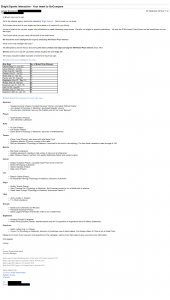
Unethical journalism
Nowhere in Lynsey’s email to the publications does she refer to sorting the Nobel Prize winners into star signs as being “science”. So it’s now clear that the Microsoft News / Cosmopolitan journalist added the “Science says…” spin. Reinforcing this conclusion, other publications that would have received the same email have published articles that more appropriately reflect both the title and content of Lynsey’s email. Examples include:
- The smartest astrological signs, ranked by Nobel Prize Winners, Business Insider
- This is the most intelligent star sign…judging by the number of Nobel Prize winners, The Sun
- The Most Intelligent Sign Of The Zodiac Has Been Revealed, InStyle.
While not adding the “Science says…” spin, these other publications could still be accused of media release journalism7. This is a very low-quality but disappointingly common8 form of journalism where the contents of media releases are used, often word-for-word, without investigating the accuracy of the information presented or further researching the particular issue.
However, in their defence, these other publications have potentially published their articles as just a bit of fun. Evidence for this view comes from the Business Insider article, which includes the very prominent statement “Editor’s Note: Astrology is just for fun and is not supported by scientific evidence”. This statement stands in stark contrast to the seriously inappropriate “Science says…” spin in the Microsoft News and Cosmopolitan articles.
In adding the seriously inappropriate “Science says…” spin, both Microsoft News and Cosmopolitan are practicing unethical journalism. There are a number of codes of ethics for journalists, and all strongly advocate the need for truth and accuracy. For example, the Society of Professional Journalists (SPJ) Code of Ethics states that:
Ethical journalism should be accurate and fair. Journalists should be honest and courageous in gathering, reporting and interpreting information.
Journalists should:
– Take responsibility for the accuracy of their work. Verify information before releasing it.
In adding the seriously inappropriate “Science says…” spin, Microsoft News is also not living up to the standards it has set for itself in its own marketing materials.
An article announcing the transition from MSN News to Microsoft News states that:
Our mission for more than two decades has been to keep you informed in an easily accessible, comprehensive and trustworthy way.
An article announcing the new Microsoft News app states that:
Microsoft News has unique features that makes it the best way to get the news:
• Trusted: Microsoft News is curated by hundreds of editors around the world. They choose the top stories, quickly deliver reliable breaking news and ensure the quality of our content.
• Diverse: The app draws on content from the top journalists in the world, working for the best known and most trustworthy news organizations globally
If you’re a reader of science news, you can avoid unethical journalism like that practiced by Microsoft News and Cosmopolitan by sourcing your news from quality specialty sources such as The Conversation.
If you’re an editor or manager at Microsoft News or Cosmopolitan, please take serious steps to significantly improve the standards of journalism in your publications.
Header image source: Adapted from Press Release by Nick Youngson which is licenced by CC BY-SA 3.0, attribution ImageCreator.
References:
- Pew Research Center (2017). Science News and Information Today. www.journalism.org/2017/09/20/science-news-and-information-today. ↩
- Chiu, K., Grundy, Q., & Bero, L. (2017). ‘Spin’ in published biomedical literature: A methodological systematic review. PLoS biology, 15(9), e2002173. ↩
- Carlson, S. (1985). A double-blind test of astrology. Nature, 318(6045), 419-425. ↩
- Kelly, I. W. (1997). Modern astrology: A critique. Psychological Reports, 81(3), 1035-1066. ↩
- Blackmore, S., & Seebold, M. (2001). The effect of horoscopes on women’s relationships. Correlation, 19(2), 17-32. ↩
- Pollex, R., Hegele, B., & Ban, M. R. (2001). Celestial determinants of success in research. Canadian Medical Association Journal, 165(12), 1584-1584. ↩
- Spence, E., & Simmons, P. (2006). The practice and ethics of media release journalism. Australian Journalism Review, 28(1), 167. ↩
- Fynes-Clinton, J. (2013). Media releases and news: An analysis of how mainstream online media used Queensland Government communications. PRism, 10(1), 1-11. ↩


